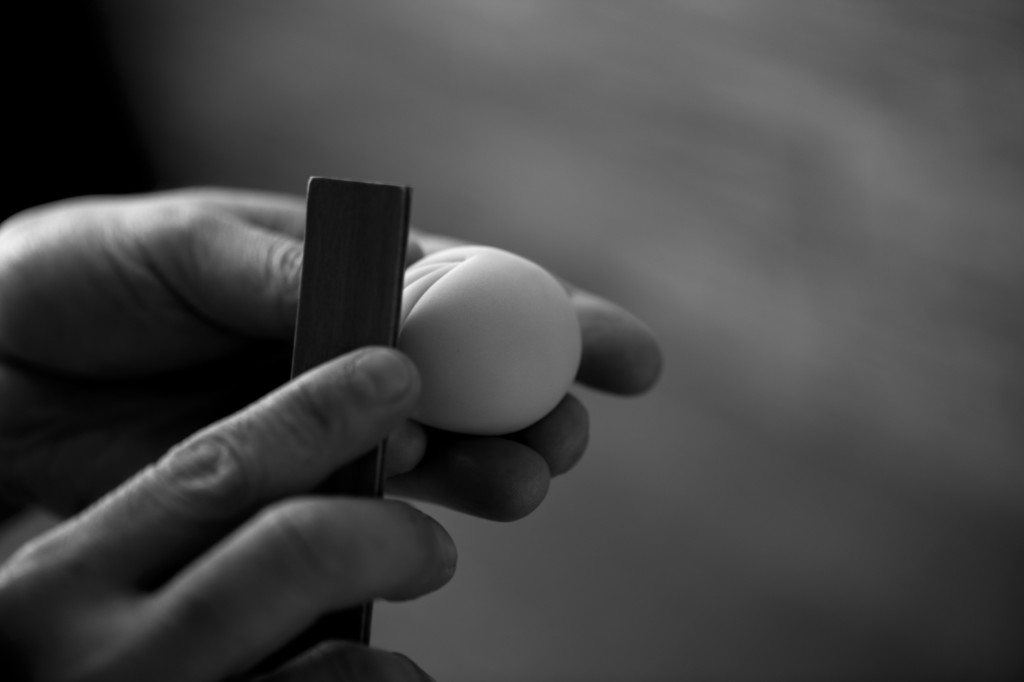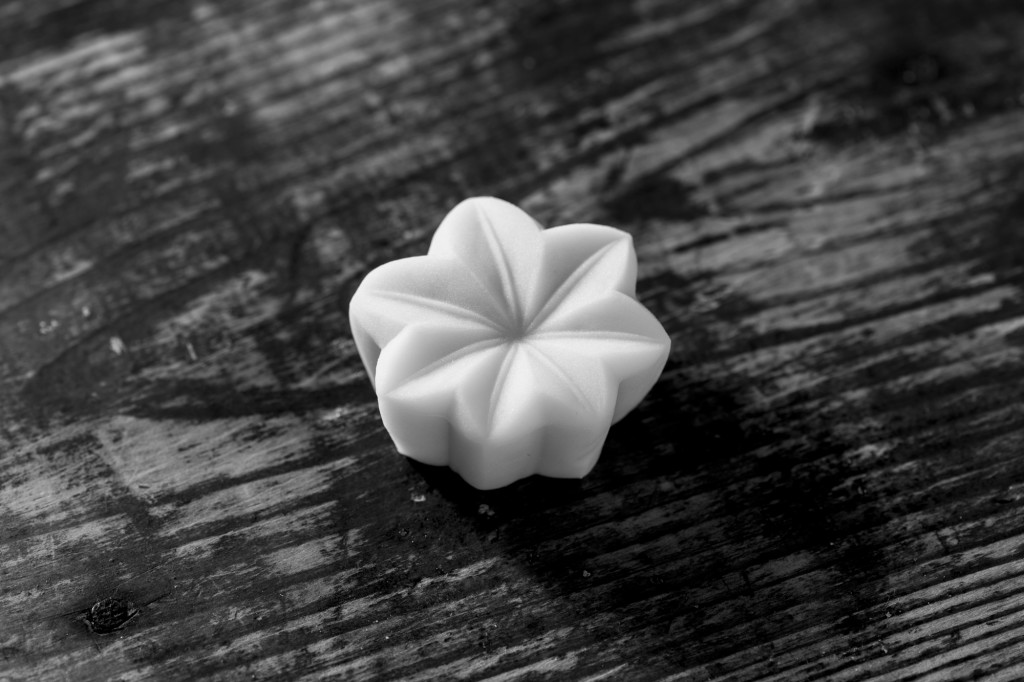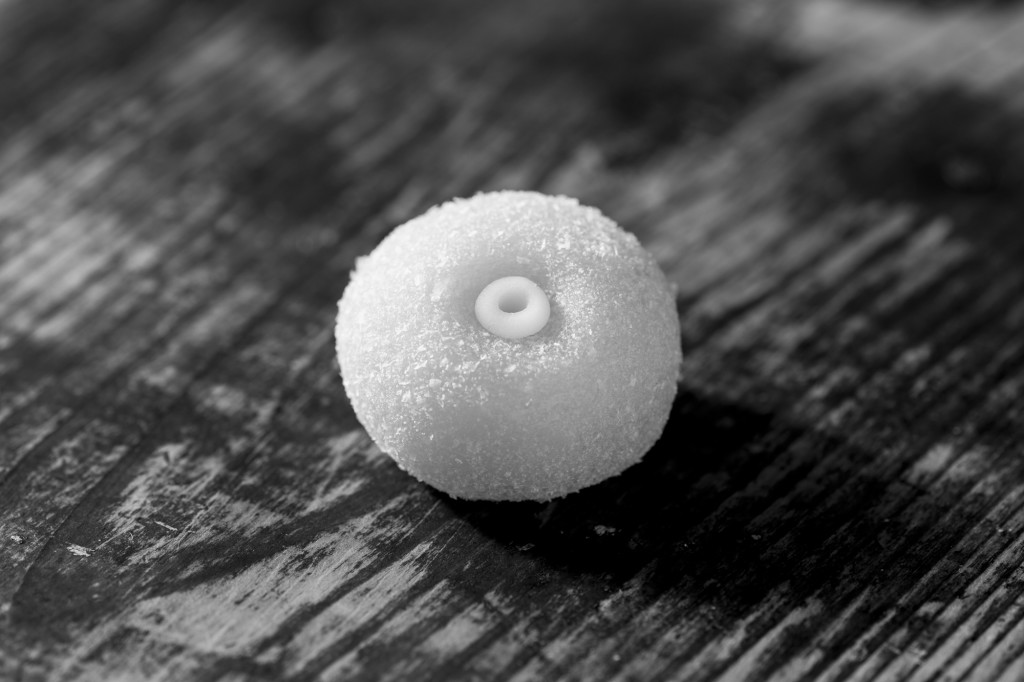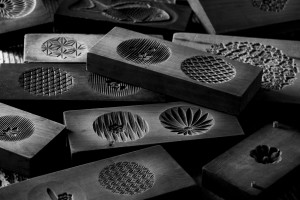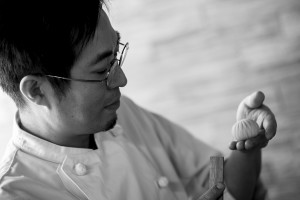I’m a huge fan of sweets. People often ask me “Which do you like more, anko (sweet, red bean paste) or whipped cream?” It’s close, but I think I’m leaning slightly toward whipped cream.
Because of my job, I get to eat a lot of sweets. I often have chances to sample new products before they hit the market. My single-day record for sweets consumption was set when I was still in my 20s working as an assistant. I put away three whole cakes and topped that off with fifteen more single slices. In those days, it didn’t phase me in the least.
The other day I went to shoot wagashi (Japanese sweets) at Kanazawa Sakakura, a specialty sweets shop in the Kamariya area of Kanazawa Ward. To be honest, my first thought was “There’s a wagashi shop in a place like this?” I also do photography concerning tea ceremony, pottery and flower arrangement, all of which have a deep connection with Japanese sweets. Of course, this is just more opportunity for me to try more varieties of wagashi. That’s why I was excited by the setting of Kanazawa Sakakura.
The term “wagashi” has been used since the end of the Taisho era (1912-1926). It came into existence out of a need to distinguish Japanese-style sweets from Western confectionaries like cakes, which became popular as influence from the West flooded in. Wagashi developed as a centerpiece of the tea ceremony, gaining in popularity most rapidly during the Edo era (1603-1868). It’s been said that, after the long period of warring that ended with the Edo era, in the peace that followed people were able to direct their creative efforts to things like making confectionaries.
During my shoot, as I gazed upon the wagashi before me, my first impression was, “This is beautiful!” As I began shooting, I felt like I was shooting jewels. After the work was done, I was rewarded with a ton of sweets as souvenirs. I rushed back to the studio and dug into them as soon as I soon as I returned. “Gosh, these are so good!”, I thought to myself. Since Japanese sweets developed alongside the tea ceremony, my expectation is that they are excessively sweet, but these had an exquisite, balanced taste. Kanazawa Sakakura is not the kind of long-established store that smugly says, “This is how Japanese sweets should be.” Their approach was a more gentle, “Please try our product and give us your impression.” The superb quality caught me off guard.
The main topics of discussion in the news these days are the Olympics, inbound tourism, Japanese culture, and whatever else is trending. It’s always in flux. But beauty is always beauty no matter who looks upon it. Something delicious is always delicious no matter who tastes it.
The next time someone asks me, “Which do you like more, anko or whipped cream?” I am ready with my answer. “I have a wagashi sweet tooth!”


